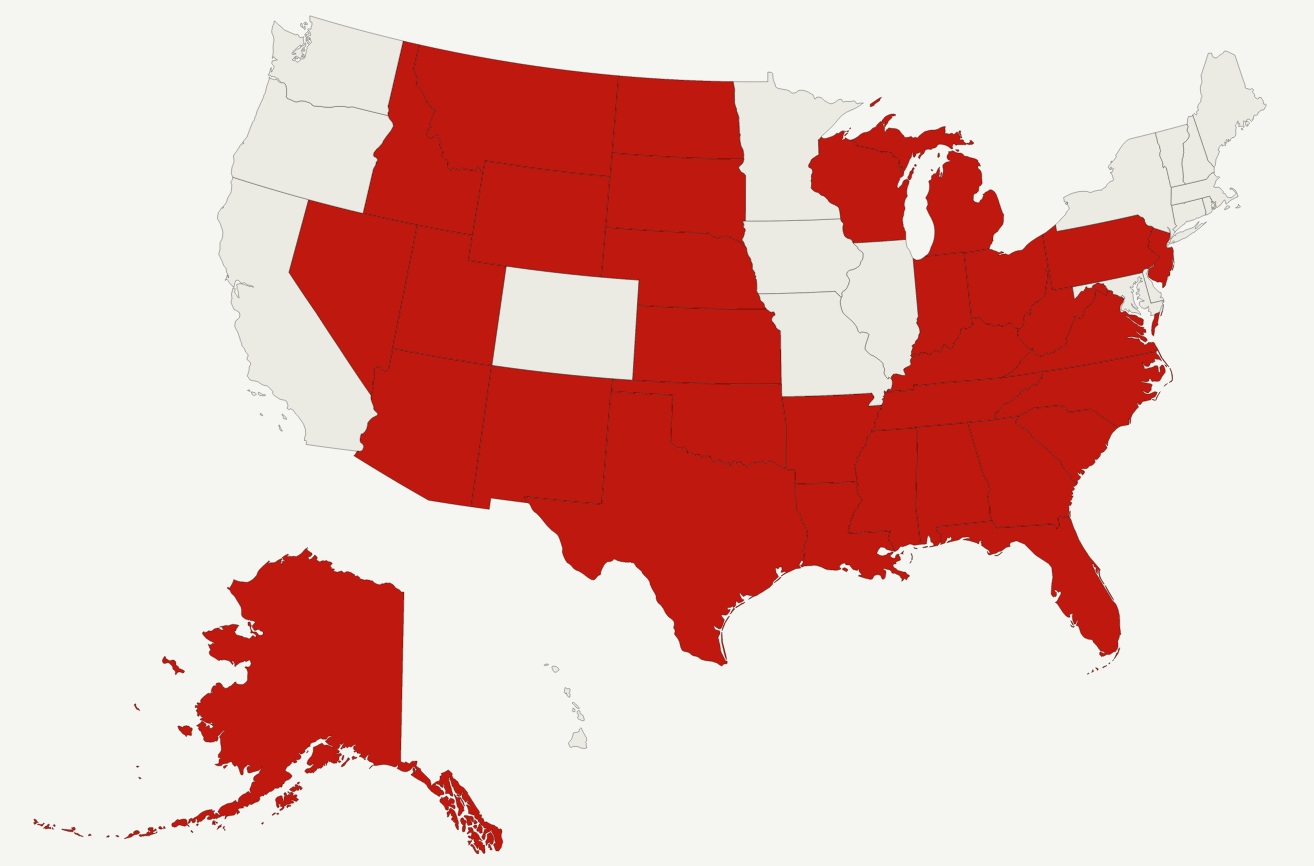Legal Challenges to EPA Regulating CO2 Begin
-
The D.C. Circuit heard oral arguments challenging EPA regulating CO2.
-
In the consolidated cases, 15 states and the nation’s largest privately owned coal producer raised the first of many legal objections against the rule.
-
The president’s 2016 budget requests $52 million to hire lawyers to defend the rule.
On April 16, the D.C. Circuit heard oral arguments in three consolidated cases challenging the Environmental Protection Agency’s proposed rule regulating carbon dioxide emissions from existing power plants.
Fifteen states and the nation’s largest privately owned coal producer asked the court to block the proposed rule before EPA finalizes it later this summer. In total, 32 states have submitted comments raising concerns about the rule’s legality.
32 states submitted comments raising concerns about the rule’s legality

Source: U.S. Chamber of Commerce
A snapshot of oral arguments
In Thursday’s case, the petitioners asked the court to block the EPA from issuing the rule, to review a 2012 settlement agreement under which the agency agreed to create the rule, and to decide whether the agency has statutory authority to regulate existing power plants under section 111(d) of the Clean Air Act.
The Clean Air Act says that the EPA cannot issue a rule under section 111(d) of the law setting standards for CO2 emissions from existing power plants when it already regulates mercury and air toxics emissions from the same plants under section 112. The EPA claims that differing amendments to the law in the House and Senate in 1990 created “ambiguity” on this point. The judges questioned both sides about this, but did not indicate a likely ruling in either direction.
The judges noted that no court has ever blocked a proposed rule before it was finalized. They expressed concern that doing so would open the floodgates to litigation targeting proposed rules. They also noted that a stay could be available to the petitioners after the rule is finalized. Judge Karen LeCraft Henderson noted that while EPA might change some details of the rule before finalizing it, the agency will not change its underlying decision to issue the rule and to do so under section 111(d). She implied that there might be a plausible argument along these lines for blocking the rule in its proposed form. Judge Thomas Griffith picked up on that line of reasoning and asked, “What are we to do with statements that there will be no change?” He referred to EPA administrator Gina McCarthy’s declarations that the rule absolutely will be issued. He suggested that such remarks could be turning the public comment period into a “sham.”
The first of many legal objections the courts will hear
In an analysis in the February 2015 edition of the Environmental Law Reporter, one attorney outlined some of the other legal arguments that might be made against the rule:
- EPA cannot require CO2 emissions reductions “outside the fenceline” of an existing power plant.
- It cannot issue an existing source performance standard before issuing a new source performance standard (that has not been finalized and faces legal challenges of its own).
- EPA cannot issue an existing source performance standard more stringent than the new source performance standard – and it cannot regulate different sources between the two.
- It cannot require anything that it can’t lawfully implement through a federal implementation plan if a state does not submit a satisfactory state implementation plan.
- The agency’s requirements conflict with state and federal utility regulation and “force state and even federal (for regional systems) utility regulators to do its bidding.”
- The EPA lacks a sufficient record to persuade a court that existing power plants significantly contribute to the endangerment of public health.
The agency knows that the rule will face stiff resistance in court and preemptively published an extraordinary 104-page legal defense of the rule when it published its proposal. “The 2016 White House budget requests $52 million merely to hire lawyers to defend this single rule,” according to an April 9 Wall Street Journal editorial.
The EPA will almost certainly have to defend its rule in the Supreme Court, where it could get a frosty reception. In a case last year challenging EPA’s use of the Clean Air Act to regulate greenhouse gas emissions, Justice Scalia wrote a majority opinion that warned the agency against unauthorized power grabs: “When an agency claims to discover in a long-extant statute an unheralded power to regulate a ‘significant portion of the American economy,’ … we typically greet its announcement with a measure of skepticism.”
Next Article Previous Article
